
The online casino industry has always embraced technology to enhance player experiences, and the future of online roulette looks particularly exciting with the integration of Virtual Reality (VR) and Artificial Intelligence (AI). These cutting-edge innovations are set to transform the way players interact with the game, creating immersive, personalized, and highly engaging environments that were once unimaginable.***Virtual Reality: Immersive Roulette ExperiencesVR technology allows players to step into a virtual casino from anywhere in the world. Using VR headsets, players can walk around realistic casino environments, approach roulette tables, and interact with live dealers and other players in real time. This level of immersion makes the online experience feel as authentic as visiting a physical casino, bringing the sights and sounds of the wheel to life. VR also opens possibilities for themed roulette tables, adding creativity and excitement to traditional gameplay.***Artificial Intelligence: Personalized and Smarter GamingAI is transforming online roulette by analyzing player behavior and preferences to offer personalized experiences. For example, AI can suggest betting strategies, identify patterns in gameplay, and provide tailored recommendations to enhance engagement. Moreover, AI-driven chatbots and virtual dealers can interact naturally with players, creating a more dynamic and responsive gaming environment. This integration ensures that the game adapts to individual players, making each session unique and engaging.***Benefits for Players and CasinosFor players, VR and AI offer heightened realism, interactive gameplay, and personalized guidance that can improve enjoyment and learning. For casinos, these technologies attract new audiences, increase engagement, and provide valuable insights into player behavior. Together, they create a more captivating and intelligent ecosystem that benefits both sides.***Challenges and ConsiderationsDespite the excitement, integrating VR and AI comes with challenges. VR requires powerful hardware and stable internet connections, which can limit accessibility for some players. AI systems must balance personalization with fairness, ensuring that player experience enhancements do not compromise game integrity. Developers also need to address privacy concerns when analyzing player data to maintain trust.***The Road AheadAs technology continues to evolve, the future of online roulette will likely blend VR and AI to create experiences that are more immersive, interactive, and player-centric than ever before. We may see multi-player VR roulette rooms, AI-guided tutorials, and highly adaptive game interfaces that respond to a player’s mood and style. This technological evolution promises to redefine online gambling, making it smarter, more engaging, and increasingly realistic.***ConclusionThe fusion of VR and AI is poised to revolutionize online roulette, offering players experiences that combine the thrill of a real casino with the advantages of digital innovation. As these technologies mature, online roulette will become more immersive, interactive, and personalized, transforming not just how we play, but how we perceive the game itself. Players and casinos alike stand to benefit from this exciting evolution, marking a bold new era in the world of online gambling.
By Abraham Benjamin · 13 Oct 2025
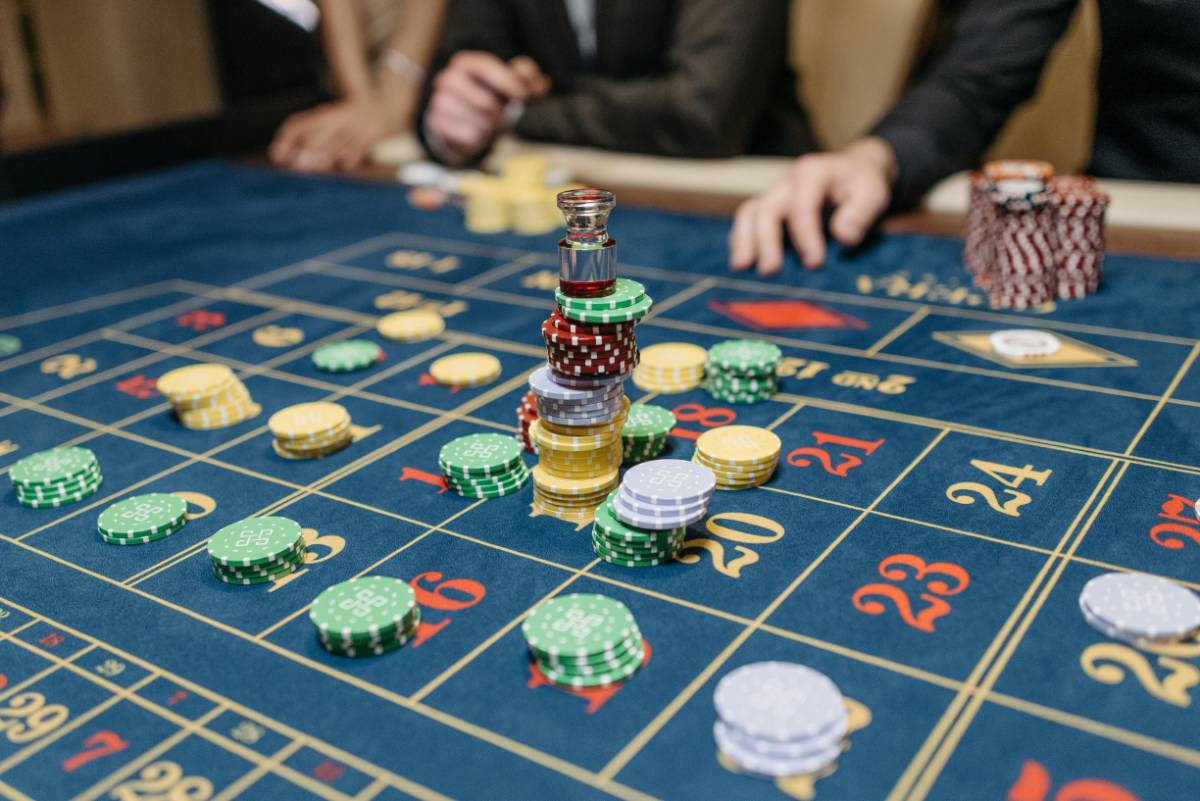
Online roulette offers a thrilling and immersive experience, combining chance, excitement, and the possibility of winning big. However, for some players, this excitement can lead to compulsive behavior and addiction. Understanding the psychology behind online roulette addiction is essential for both players and their loved ones to recognize warning signs and take preventive measures.***Why Online Roulette Is So AddictiveThe unpredictability of roulette triggers strong emotional responses. Every spin is a new chance to win, creating a cycle of anticipation and reward. This uncertainty, combined with the instant feedback provided by online platforms, stimulates the brain’s reward system, releasing dopamine and reinforcing the desire to keep playing. The convenience of playing from home and the availability of mobile apps further increase accessibility, making it easier for individuals to gamble excessively.***The Role of Illusion of ControlMany players believe they can influence outcomes through strategies or superstitions, despite roulette being a game of pure chance. This “illusion of control” keeps players engaged, as they feel that their decisions or rituals can change the result of a spin. The more invested they feel in their strategy, the harder it becomes to step away from the game.***Emotional Triggers and EscapismFor some individuals, online roulette becomes a way to escape stress, boredom, or negative emotions. The game provides temporary excitement and distraction, but it does not address underlying issues. Over time, reliance on gambling as an emotional coping mechanism can reinforce addictive patterns and make it difficult to stop.***Behavioral Patterns of AddictionCompulsive players often exhibit certain behaviors, such as:Chasing losses: Trying to win back money lost in previous spins.Increasing bet sizes: Betting more than initially planned to recover losses or achieve bigger wins.Neglecting responsibilities: Spending excessive time gambling at the expense of work, social life, or personal well-being.Preoccupation with gambling: Constantly thinking about future spins or planning the next session.***Preventing and Managing Online Roulette AddictionSet Limits: Establish strict time and money limits before starting to play.Self-Exclusion Tools: Many online casinos offer features to temporarily or permanently block access.Seek Support: Organizations like Gamblers Anonymous provide resources and support for individuals struggling with addiction.Stay Mindful: Recognize emotional triggers and avoid gambling when stressed, bored, or upset.***ConclusionOnline roulette can be a fun and exciting form of entertainment when approached responsibly. However, the combination of unpredictability, instant rewards, and emotional engagement can lead to addictive behaviors for some players. By understanding the psychology behind addiction, recognizing warning signs, and implementing preventive measures, players can enjoy the thrill of roulette while maintaining control over their gambling habits. Responsible play ensures that roulette remains a source of enjoyment rather than a source of harm.
By Stefen · 12 Oct 2025
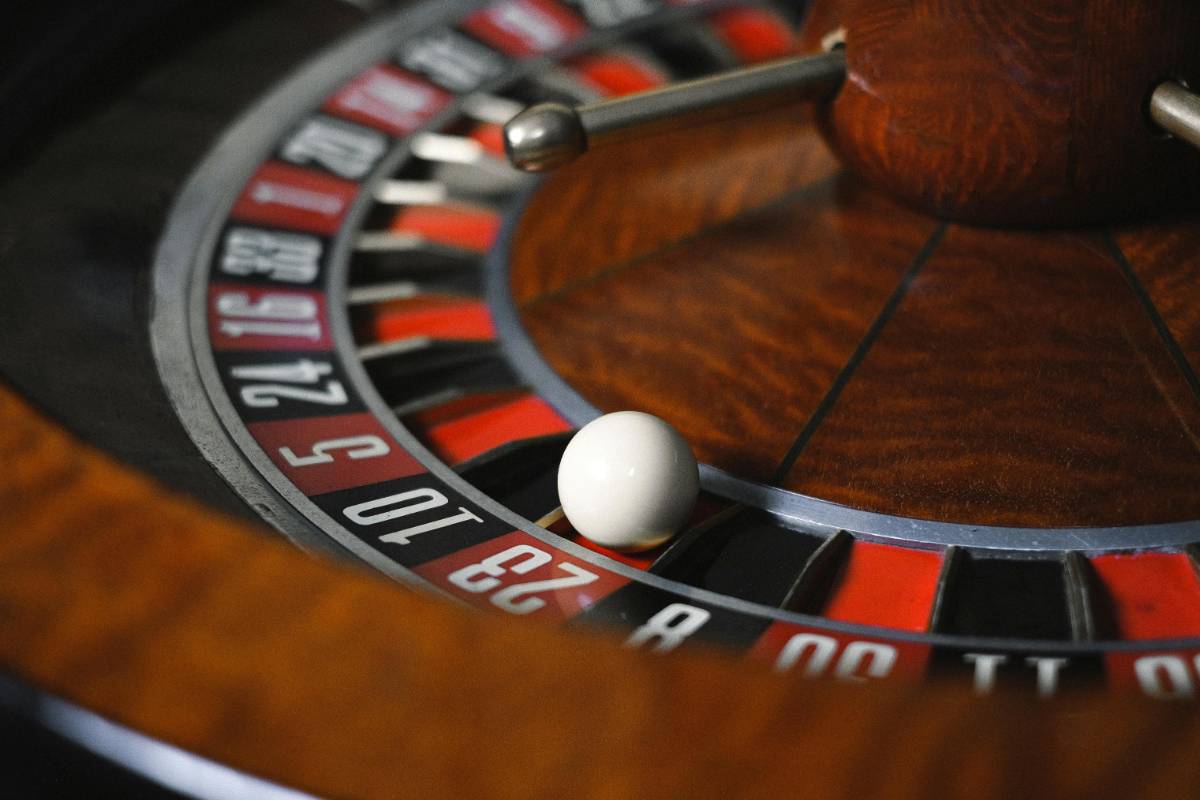
Online roulette is one of the most exciting casino games, offering players the chance to win big while enjoying the thrill of the spin. While roulette is primarily a game of chance, using smart strategies can improve your overall performance and help manage your bankroll more effectively. Understanding different betting approaches and knowing when to apply them is key to becoming a consistent player.***Understanding the BasicsBefore implementing any strategy, it’s important to understand the structure of online roulette. Most online platforms offer both American and European roulette. The main difference is that American roulette has 38 pockets (1-36, 0, 00) and a house edge of 5.26%, whereas European roulette has 37 pockets (1-36, 0) and a house edge of 2.7%. Choosing the right version of the game can make a significant difference in your long-term outcomes.***Popular Betting StrategiesMartingale Strategy: This is one of the most famous betting strategies. Players double their bet after each loss on even-money bets like red/black or odd/even. The goal is to recover all previous losses and make a small profit. While it can work in the short term, players need a large bankroll to withstand losing streaks.Reverse Martingale (Paroli): In contrast to the Martingale, this strategy focuses on increasing bets after wins. It capitalizes on winning streaks while limiting losses during losing streaks. Many players prefer this approach for its lower risk profile.D’Alembert System: This strategy involves increasing your bet by one unit after a loss and decreasing it by one unit after a win. It’s considered safer than the Martingale but also yields smaller profits. It helps maintain balance and control over your bankroll.Fibonacci Strategy: Using the famous Fibonacci sequence (1, 1, 2, 3, 5, 8…), players increase bets according to the sequence after losses. Wins move you back two steps. This system provides a structured approach to betting and is less aggressive than doubling every time.***Bankroll Management TipsSet a Budget: Determine how much you’re willing to spend and stick to it. Never chase losses or exceed your limits.Bet in Sessions: Divide your bankroll into smaller sessions to extend gameplay and manage risk.Avoid Overbetting: Don’t place large bets in the hope of quick wins; it increases risk and stress.Track Your Wins and Losses: Maintaining a record helps you understand patterns in your play and adjust strategies accordingly.***Mindset and DisciplineRoulette is a game of chance, so even the best strategies cannot guarantee consistent wins. Maintaining a disciplined mindset is essential. Avoid emotional betting and know when to walk away. Recognizing that losing streaks are normal prevents frustration and helps maintain a positive gambling experience.***Practice Makes PerfectMost online casinos offer free play or demo modes, allowing you to practice strategies without risking real money. Experimenting in these low-pressure environments helps you understand different betting systems, refine your approach, and build confidence for real-money play.***ConclusionWhile there is no foolproof way to win every spin in online roulette, using structured betting strategies, managing your bankroll, and maintaining discipline can improve your overall experience and increase your chances of success. By approaching the game with knowledge and strategy, you can enjoy more rewarding gameplay while keeping the excitement of roulette alive.
By Robert Anthony Brown · 11 Oct 2025
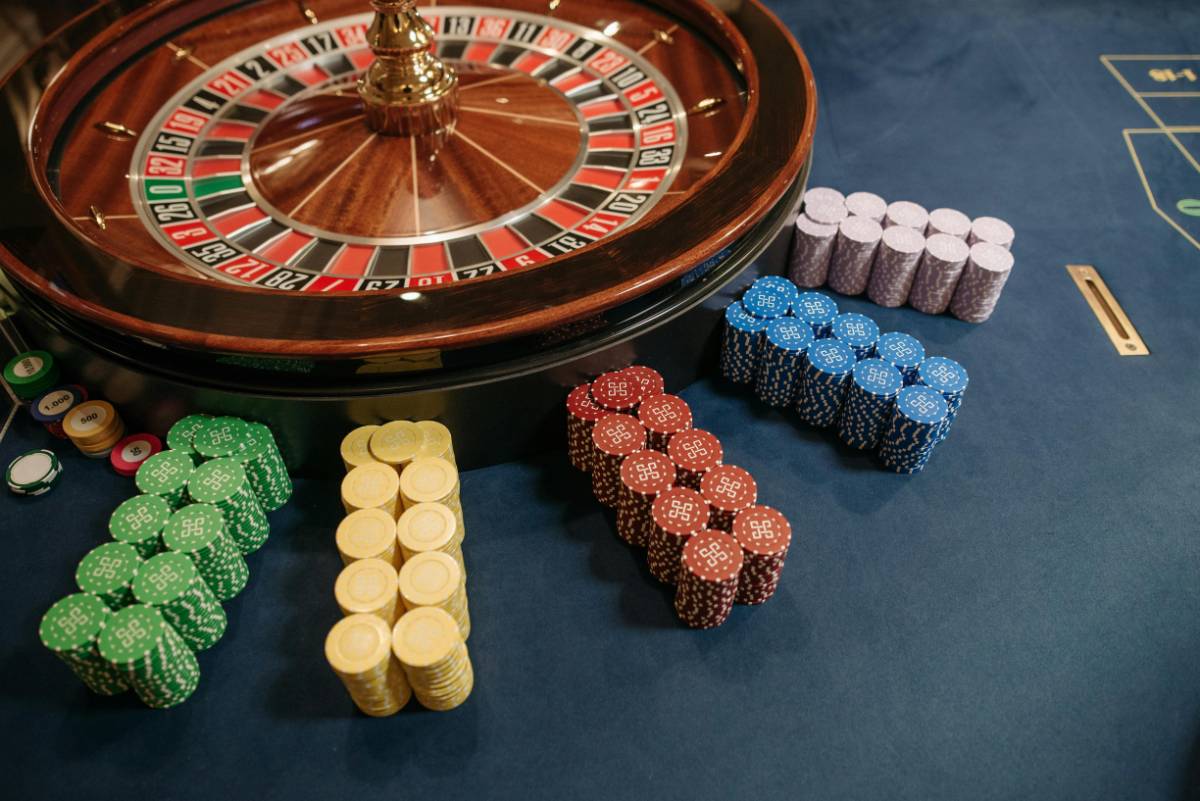
The world of online casinos has undergone a massive transformation in recent years, and one of the biggest innovations driving this change is live dealer roulette. For decades, online roulette relied solely on computer-generated outcomes using Random Number Generators (RNGs). While secure and fair, many players missed the authentic feel of a real casino. Enter live dealer roulette—a game-changer that bridges the gap between digital convenience and real-world excitement.***What Is Live Dealer Roulette?Live dealer roulette is streamed in real time from a professional studio or physical casino. A human dealer spins the wheel while players place their bets virtually on their devices. The entire experience is broadcast using high-definition cameras, allowing players to watch the action unfold just as they would in a land-based casino. This innovation combines the transparency of physical roulette with the accessibility of online gaming.***Why Players Love Live Dealer RouletteThe main reason live dealer roulette is so popular is trust. Many players were skeptical of RNG-based outcomes, fearing possible manipulation. Seeing a real dealer spin the wheel restores confidence that the results are genuine. Beyond fairness, the live experience also creates a sense of community. Players can interact with the dealer and even chat with fellow gamblers, making the experience more social and immersive.***The Technology Behind ItLive dealer roulette is made possible by advanced streaming technology and Optical Character Recognition (OCR) software. Cameras capture every detail of the spin, while the OCR translates the physical ball’s position into digital results that update players’ screens instantly. This ensures seamless integration between the physical game and the online platform. Fast internet speeds and mobile compatibility have further boosted the game’s accessibility.***Impact on Online CasinosThe introduction of live dealer games has significantly increased player engagement. Casinos offering live roulette often see longer play sessions and greater trust from users. The format also attracts traditional casino-goers who might not otherwise gamble online, bridging the gap between physical and digital casinos. Live dealer roulette has become a flagship offering, reshaping how platforms market themselves and compete in the industry.***Future of Live Dealer RouletteAs technology continues to advance, the future of live dealer roulette looks even brighter. Innovations such as augmented reality, multiple camera angles, and interactive features are already being introduced. Some platforms are experimenting with hybrid games that combine live dealers with advanced animations, creating an even more dynamic experience. The trend suggests that live dealer roulette will continue to play a central role in the evolution of online casinos.***ConclusionLive dealer roulette has revolutionized the online casino industry by combining authenticity, trust, and convenience in one seamless package. It offers players the excitement of a real casino without leaving their homes, while giving online operators a powerful way to build credibility and loyalty. As the technology evolves, live dealer roulette will remain at the heart of innovation, shaping the future of online gambling for years to come.
By John Michael Smith · 10 Oct 2025

Online roulette has exploded in popularity over the last decade, offering players the thrill of the wheel from the comfort of their homes. But one of the biggest questions that new and experienced players alike often ask is: Is online roulette rigged, or is it genuinely fair? With real money on the line, understanding how fairness is ensured—or manipulated—becomes crucial for anyone who wants to enjoy the game responsibly.***How Online Roulette WorksUnlike a physical roulette wheel, online roulette relies on sophisticated software to generate results. At the core of this software is the Random Number Generator (RNG). The RNG produces outcomes that are completely unpredictable and independent, simulating the randomness of a spinning wheel and bouncing ball. Licensed casinos must use certified RNGs tested by independent agencies to ensure fairness.***Why Players Suspect RiggingMany players assume the game is rigged when they encounter long losing streaks or when patterns seem to emerge that feel "unfair." In reality, roulette is a game of chance, and losing streaks are a natural part of probability. The house edge in American Roulette, for example, is 5.26%, which means the casino already has a built-in advantage without needing to cheat. However, unlicensed or shady platforms may tamper with results, which fuels skepticism.***How Fairness Is EnsuredLicensed online casinos are regulated by gaming authorities such as the UK Gambling Commission, Malta Gaming Authority, or eCOGRA auditors. These organizations regularly test the RNG software to ensure it produces random and fair results. Transparency reports are sometimes published to reassure players that the game operates as intended. Choosing a reputable platform is key to ensuring fairness.***Live Dealer Roulette vs. RNG RouletteFor players who still doubt digital fairness, live dealer roulette offers a compelling alternative. In this version, a real human dealer spins a physical wheel in real time, streamed via high-definition video. This eliminates reliance on software and reassures players that the outcomes are genuine. Both options are fair when offered by licensed casinos, but live dealer games provide added trust for skeptical players.***Tips to Avoid Rigged PlatformsStick to licensed casinos: Always verify the operator’s license and regulatory authority.Check for independent audits: Reputable casinos highlight certifications from agencies like eCOGRA.Read player reviews: Feedback from other players often highlights whether a platform is trustworthy.Avoid "too good to be true" bonuses: Scam sites often lure players with unrealistic promotions.***ConclusionSo, is online roulette rigged or fair? The answer depends entirely on where you play. At reputable, licensed casinos, online roulette is fair, driven by RNGs and overseen by independent auditors. At shady or unregulated sites, fairness can’t be guaranteed. For players, the responsibility lies in choosing trusted platforms, understanding how the technology works, and maintaining realistic expectations about the role of chance in every spin. By playing smart, you can enjoy online roulette with confidence and excitement.
By Christopher David Wilson · 09 Oct 2025

Online roulette has become one of the most popular casino games in the United States, and with the rise of legalized online gambling in states like New Jersey, Pennsylvania, and Michigan, bonuses are playing a major role in attracting new players. These bonuses may look straightforward, but understanding how they work is crucial if you want to maximize your online roulette experience. From welcome offers to cashback deals, here’s what players should know before spinning the wheel.***Welcome Bonuses and Deposit MatchesThe most common type of bonus U.S. players encounter is the welcome bonus, usually offered when you sign up at an online casino. These often come in the form of deposit matches, where the casino will match your deposit up to a certain percentage. For example, a 100% match bonus on a $200 deposit gives you an additional $200 to play with. While attractive, players should carefully check wagering requirements to understand how many times the bonus amount must be wagered before winnings can be withdrawn.***No-Deposit BonusesNo-deposit bonuses are highly sought after because they let players try online roulette without risking their own money. Typically offered as free credits or free spins on slots, some platforms also allow these bonuses to be used on roulette tables. However, no-deposit bonuses usually come with stricter wagering requirements and withdrawal limits, making them a fun but limited way to explore the game.***Cashback and Loss RebatesSeveral U.S. online casinos now offer cashback bonuses, which refund a percentage of your losses over a set period. For example, a casino may return 10% of your net losses at the roulette table for the week. These bonuses provide a safety net for players, reducing the sting of bad luck and encouraging continued play. Cashback deals are especially attractive to regular roulette players who want a steady benefit rather than just one-time offers.***Loyalty and VIP ProgramsMost major online casinos in the U.S. feature loyalty or VIP programs where players earn points for every wager. These points can later be exchanged for cash, bonuses, or exclusive rewards such as event invitations and luxury gifts. High rollers who frequently play online roulette often benefit the most, as VIP programs may offer higher cashback percentages, faster withdrawals, and dedicated account managers.***Game Contribution RulesOne of the most important things to understand about roulette bonuses is game contribution. Many online casinos weigh roulette differently than slots when it comes to clearing bonus wagering requirements. While slots often count 100% toward wagering, roulette may only count 10% or even less. This means players may need to wager much more on roulette than on slots to meet requirements. Always check the terms and conditions to avoid surprises.***Live Dealer Roulette PromotionsLive dealer roulette has become a massive hit in the U.S. online casino scene, and many platforms now offer specific bonuses tied to live tables. These may include leaderboard competitions, prize drops, or special multipliers for certain bets. For players who enjoy the authenticity of live gaming, these promotions provide an engaging way to enhance the experience while adding extra value.***Mobile-Exclusive BonusesAs mobile play continues to dominate the online gambling market, many U.S. casinos offer mobile-exclusive promotions. These might include free chips for downloading the casino’s app or deposit matches for mobile play only. Since roulette translates seamlessly to smartphones and tablets, mobile bonuses are becoming a major factor in how players choose platforms.***Responsible Gambling and Bonus UseWhile bonuses can add excitement, it’s important for players to approach them responsibly. The temptation to chase wagering requirements can sometimes lead to overspending. U.S. online casinos are increasingly required to promote responsible gambling tools, such as deposit limits, time trackers, and self-exclusion features. Players should always see bonuses as an added perk—not a guarantee of profit.***Future Trends in Roulette BonusesBy 2025, online roulette bonuses in the U.S. are evolving rapidly. Casinos are beginning to personalize promotions based on player behavior, offering tailored deals that suit individual preferences. Gamified bonuses, where players complete missions or challenges for rewards, are also on the rise. With the integration of advanced technology, future bonuses are likely to be more interactive, transparent, and rewarding for players who know how to use them wisely.***ConclusionRoulette bonuses in U.S. online casinos can significantly enhance your gaming experience, but only if you understand the fine print. From welcome offers and cashback deals to loyalty programs and live dealer promotions, the options are diverse. By paying attention to wagering requirements and contribution rules, players can make smarter choices and get the most out of their bonuses. In a rapidly growing digital gaming market, knowledge is the key to spinning smart and enjoying the thrill of online roulette responsibly.
By Samantha Lee · 08 Oct 2025
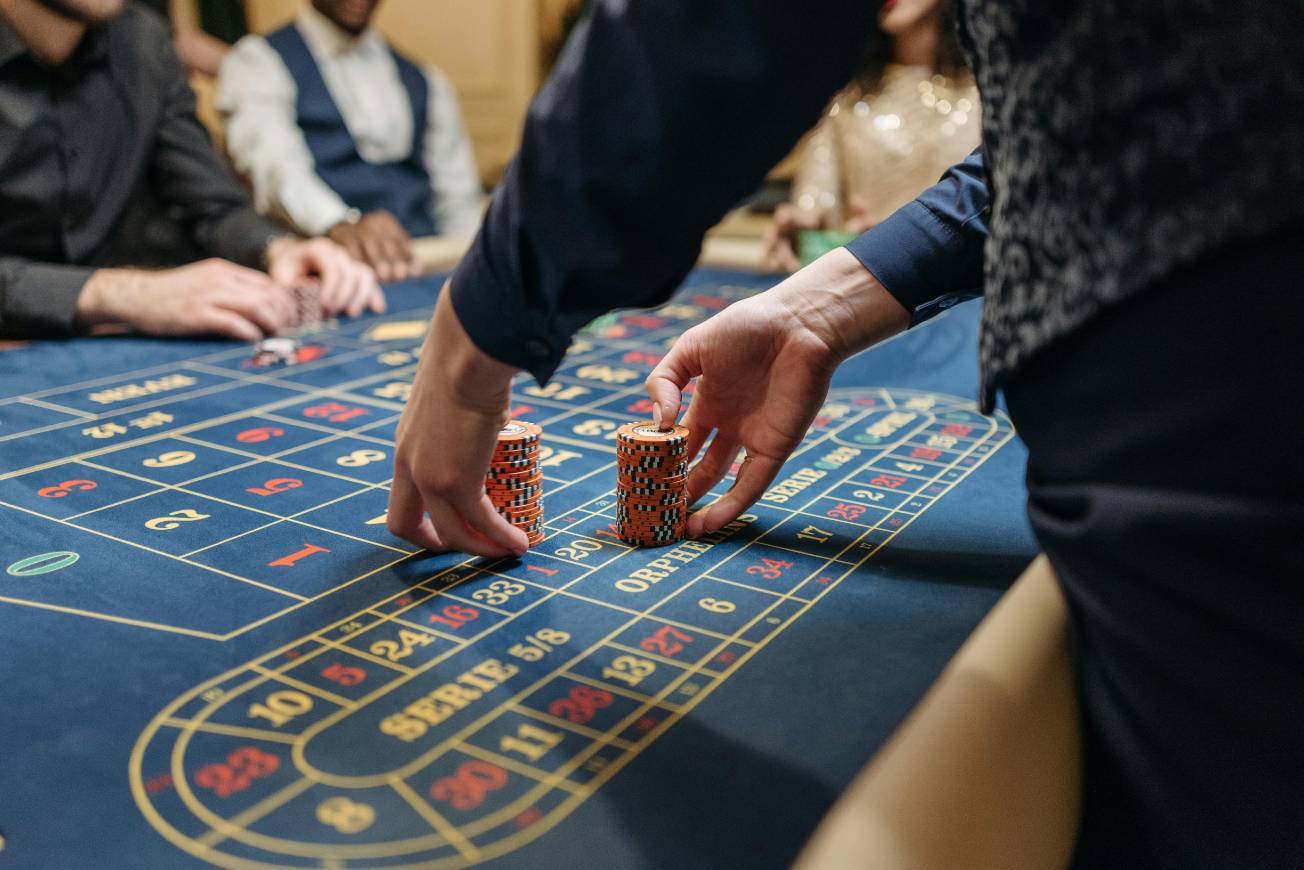
In recent years, live dealer roulette has transformed from a niche online feature into one of the fastest-growing segments of the U.S. gambling market. Combining the authenticity of a traditional casino with the convenience of digital access, this hybrid experience has struck a chord with American players. As online gambling continues to expand across the country, live dealer roulette is poised to play a central role in shaping the future of gaming in the United States. With the growth of technology, state regulations, and changing player habits, the rise of live dealer roulette is no longer just an industry prediction—it’s a reality taking shape before our eyes.***What Makes Live Dealer Roulette SpecialUnlike standard online roulette powered by random number generators (RNG), live dealer roulette uses real tables, real wheels, and human dealers broadcast through high-definition video streams. Players can place bets on their devices while watching the dealer spin the wheel in real time. This blend of trust, transparency, and interactivity creates a far more engaging experience than purely digital versions, helping it attract both newcomers and seasoned gamblers. For many, the feeling of watching the ball land on a number live removes the skepticism that sometimes surrounds digital-only casino games. In the U.S., where players value transparency and fairness, this trust factor has been a major reason for its rapid adoption.Live dealer roulette also offers a human connection that’s missing in standard online formats. Players can chat with the dealer, celebrate wins alongside others at the table, and feel the excitement of a communal atmosphere, all while sitting in their living rooms. This interaction blends the excitement of Las Vegas with the comfort of home—a combination that makes it highly appealing in a country where convenience and entertainment often go hand in hand.***Expansion Through LegalizationOne of the biggest factors driving the future of live dealer roulette in the USA is the ongoing legalization of online gambling. States like New Jersey, Michigan, and Pennsylvania already offer live dealer games through licensed platforms, while others such as New York, Illinois, and California are actively debating the expansion of online casino regulation. The Supreme Court’s landmark 2018 ruling that allowed states to regulate sports betting also opened the door to broader gambling legislation. With tax revenues and job creation on the line, more states are expected to embrace online gambling, and live dealer roulette will be among the top offerings.The American gambling landscape is unique because it’s regulated state by state rather than federally. This means the pace of adoption varies, but it also creates opportunities for competition among states. As each state works to attract gamblers, live dealer roulette—being both popular and profitable—is quickly becoming a standard feature. The legalization trend indicates that in the next decade, live dealer roulette will be available to the majority of Americans, not just those living in gambling-friendly states.***Technology Driving Immersive PlayTechnology is at the heart of why live dealer roulette is so compelling and why it will dominate the future. 5G connectivity ensures smooth streaming with no lag, even on mobile devices. Ultra-HD cameras placed at different angles provide immersive views of the wheel, dealer, and betting area. Players can switch between camera perspectives to customize their experience, making it feel closer to an in-person casino game. In addition, multi-table functionality allows players to watch and participate in more than one game simultaneously, maximizing engagement.Looking further ahead, the integration of virtual reality (VR) and augmented reality (AR) will take live dealer roulette to unprecedented levels. Imagine putting on a VR headset and entering a digital replica of a Las Vegas casino, walking up to a roulette table, and interacting with a live dealer as though you’re physically present. AR could overlay roulette tables onto real-world environments, turning a coffee table in your home into a gaming table. These immersive technologies are no longer science fiction—they are already being tested in pilot programs by leading U.S. casino operators.***The Role of Trust and TransparencyTrust remains one of the strongest selling points for live dealer roulette in the U.S. market. Unlike RNG-based games, which some skeptics suspect of being manipulated, live dealer roulette shows every spin, every ball drop, and every outcome in real time. This transparency builds confidence among players who may otherwise hesitate to gamble online. Licensed U.S. platforms also add another layer of security by being regulated, audited, and required to maintain fairness. In an era where online scams are prevalent, trust is perhaps the most valuable currency for digital casinos, and live dealer roulette capitalizes on it effectively.Transparency also benefits casinos. By providing visible, fair gameplay, operators can attract and retain customers who may have previously stuck to land-based casinos. This assurance of fairness strengthens brand loyalty and helps U.S. operators compete against unregulated offshore platforms.***Appeal to a New Generation of PlayersYounger American gamblers, particularly Millennials and Gen Z, are driving the shift in gambling trends. They tend to prefer games that are interactive, social, and tech-driven rather than traditional slot machines. Live dealer roulette caters perfectly to these preferences. Features such as real-time chat with dealers, interactive betting interfaces, and multiplayer tables allow for a shared experience, much like gaming or streaming platforms that younger players already use.This demographic also values flexibility. Being able to play on mobile devices during commutes, on tablets at home, or even while traveling makes live dealer roulette ideal. In fact, studies show that more than 70% of online gambling in the U.S. is now done via mobile devices, making live dealer formats even more crucial to the future. By combining social interaction, convenience, and high-quality visuals, live dealer roulette aligns perfectly with the expectations of America’s younger gamblers.***The Impact of COVID-19 on Live Dealer GamesThe COVID-19 pandemic played an unexpected role in accelerating the adoption of live dealer roulette in the USA. With casinos closed and people confined to their homes, online gambling became the only option for many players. During this period, live dealer roulette surged in popularity because it provided the closest experience to being in a real casino. Even after restrictions lifted, many players continued to prefer live dealer games, having discovered the convenience and thrill they offered. This cultural shift solidified live dealer roulette as a permanent fixture in the American gambling scene.***Economic Impact and Casino Industry ShiftsThe rise of live dealer roulette also has economic implications. Online casinos offering live dealer games generate significant revenue, contributing to state taxes and creating new jobs in technology, customer service, and broadcasting. Studios hosting live dealer games in states like New Jersey and Michigan employ hundreds of dealers, camera operators, and support staff. As more states legalize online gambling, the industry will expand further, boosting local economies while reshaping the casino workforce.Interestingly, live dealer roulette is also changing the way physical casinos operate. Many land-based casinos are now investing in hybrid experiences, where players can participate in live dealer games from lounges or hotel rooms within the casino property itself. This integration ensures that live dealer formats complement rather than replace physical casinos, creating a win-win situation for the industry.***Future OutlookThe future of live dealer roulette in the USA is incredibly promising. The combination of legal expansion, technological innovation, and shifting player preferences makes it one of the most dynamic areas of the gambling industry. In the next five to ten years, we can expect to see nationwide legalization, VR and AR-powered experiences, and even greater personalization options for players. AI may soon be used to tailor roulette sessions to individual preferences, offering customized table limits, dealer styles, and promotional offers.In addition, live dealer roulette will likely evolve into a more entertainment-driven format. Just as Twitch and YouTube transformed video gaming into a spectator sport, live dealer roulette may attract audiences who enjoy watching streams without necessarily betting themselves. This could lead to crossover with social media platforms, influencers hosting live roulette nights, and a blending of gambling with mainstream entertainment.***ConclusionLive dealer roulette has already proven itself as more than just a trend—it’s a revolution in how Americans gamble online. With its unique mix of authenticity, technology, and social interaction, it bridges the gap between the traditional casino floor and the digital world. Legalization across states, combined with innovation in streaming, VR, and mobile gaming, ensures that it will only grow stronger. As the industry evolves, live dealer roulette will remain at the heart of U.S. gaming, offering not just a game of chance but an experience that embodies the future of entertainment. For American players, the little wheel continues to spin—but now, it spins in living rooms, on mobile devices, and in virtual spaces across the nation.At over two centuries old, roulette has never lost its charm. Yet, in the form of live dealer roulette, it has found new life in the American digital age. It is not just surviving the shift to online platforms—it is thriving. The fusion of tradition and innovation makes live dealer roulette a symbol of the gambling industry’s future in the USA. Its story is still unfolding, but one thing is certain: the wheel will keep spinning, and American players will keep watching with anticipation.
By Rahul Sharma · 07 Oct 2025

Roulette is one of the most iconic and recognizable casino games in the world, but not all roulette wheels are created equal. Two versions dominate the global gambling scene: American Roulette and European Roulette. While both share the same thrilling gameplay of spinning a wheel and betting on outcomes, they differ in design, odds, and player experience. In the United States, where gambling culture is deeply tied to Las Vegas and Atlantic City, American Roulette has historically reigned supreme. However, with the rise of online casinos, U.S. players now have more access than ever to European Roulette as well. This raises the question: which version do American players actually prefer in 2025? To answer that, we need to dive into their history, mechanics, house edges, player psychology, and cultural influence.***The Historical Background of Roulette in AmericaRoulette originated in 18th-century France, inspired by Blaise Pascal’s experiments with perpetual motion. The early wheels had both single zero and double zero pockets, but European casinos eventually phased out the double zero, creating what is now known as European Roulette. When the game crossed the Atlantic in the 19th century, American casinos deliberately brought back the double zero, giving birth to American Roulette. The addition of the 00 increased the house edge, making the game more profitable for operators. This version became a fixture in Las Vegas, Atlantic City, and other U.S. gambling hubs. For decades, American players grew accustomed to the double-zero wheel, cementing it as the “standard” roulette in the United States.***American Roulette: Features and GameplayAmerican Roulette wheels have 38 pockets: numbers 1–36, plus a single zero (0) and a double zero (00). This additional green pocket creates higher odds in favor of the casino. The layout of the betting table also reflects this difference, with special bets tied to the double zero. Gameplay is simple and identical in format to European Roulette: players place bets on single numbers, groups of numbers, or characteristics like red/black or odd/even, then the dealer spins the wheel and releases the ball. The presence of the double zero, however, changes the probabilities and payouts, tilting them slightly more toward the house.***European Roulette: Features and GameplayEuropean Roulette uses a 37-pocket wheel: numbers 1–36 plus a single zero (0). Without the double zero, the odds improve significantly for players, resulting in a house edge of 2.7% compared to 5.26% in American Roulette. The table layout is slightly different as well, particularly with the “call bets” or “announced bets” that are more common in European play. These bets cover specific sections of the wheel, like Voisins du Zéro, Tiers du Cylindre, and Orphelins, adding a strategic layer often appreciated by experienced gamblers. European Roulette is widely regarded as the “fairer” version, which explains its popularity in Europe and in international online casinos.***The Mathematical Differences: House Edge and Player OddsThe key distinction between the two versions lies in mathematics. In American Roulette, the double zero increases the house edge to 5.26%. For every $100 wagered over time, players statistically lose $5.26. In European Roulette, the house edge drops to 2.7%, meaning players lose only $2.70 per $100 wagered. While this may seem like a small difference, it has a massive impact over long gaming sessions. For professional gamblers and strategy-focused players, the European wheel is the clear choice. Casual players in the U.S., however, often overlook this detail, focusing instead on the thrill and familiarity of the American version.***Why American Roulette Dominates U.S. CasinosThe dominance of American Roulette in U.S. casinos is not accidental. Casino operators prefer it because the higher house edge ensures greater profitability. Over decades, players have come to associate the double-zero wheel with the glamour of Las Vegas. In fact, for many tourists, playing American Roulette is part of the quintessential Vegas experience. Casino marketing, Hollywood films, and cultural imagery have reinforced this preference. For instance, when you picture a tuxedo-clad gambler dramatically pushing chips onto a number in a Vegas movie scene, chances are the wheel shown is American Roulette.***The Online Casino Revolution: European Roulette Enters the U.S. MarketWith the expansion of online gambling in the United States, European Roulette has made major inroads. Most online platforms offer both American and European versions, giving players the freedom to choose. Unsurprisingly, many U.S. players are now gravitating toward European Roulette after discovering its better odds. Live dealer games streamed from European studios often feature single-zero wheels, exposing American gamblers to a version that was once hard to find in physical U.S. casinos. This shift has created a fascinating divide: while traditional brick-and-mortar players still prefer American Roulette, online players increasingly lean toward the European variant.***Psychological Factors: Familiarity vs. ValueAmerican players’ preferences often come down to psychology. Many older players stick with American Roulette simply because it’s what they’ve always known. The visual layout, the double zero, and the cultural association with Vegas create a sense of nostalgia and authenticity. On the other hand, younger and more tech-savvy players, who tend to research odds and strategies online, are more likely to favor European Roulette. For them, the appeal lies in maximizing value and minimizing losses. This generational divide highlights how personal experience and knowledge shape preferences between the two versions.***The Impact of Strategy on PreferencesRoulette is largely a game of chance, but players often bring strategies to the table, such as the Martingale, Fibonacci, or Labouchere systems. These strategies tend to perform better with lower house edges, making European Roulette the more logical choice. For example, doubling down after losses (the Martingale) is less punishing when the house edge is 2.7% rather than 5.26%. American Roulette, with its higher edge, makes these systems riskier in the long run. Players who value strategy and bankroll management tend to prefer European Roulette, while those focused on short-term thrills may stick with the American wheel.***Cultural Influence: Las Vegas vs. Monte CarloCulture also plays a huge role in preference. American Roulette is tied to the image of Las Vegas, with its neon lights, casino floors, and Hollywood portrayals. European Roulette, meanwhile, is associated with Monte Carlo, sophistication, and high-class European casinos. American players often choose based on the atmosphere they want to emulate. Tourists in Las Vegas are likely to play American Roulette for the full experience, while online players who dream of European elegance may gravitate toward the single-zero version. This cultural distinction ensures that both versions will continue to coexist in the American gambling market.***Future Trends: Which Version Will Dominate?Looking ahead, the U.S. market is unlikely to see one version completely replace the other. American Roulette will remain the dominant choice in physical casinos, where tradition and familiarity matter most. European Roulette, however, will continue to gain traction in the online sphere, where informed players seek better odds. Hybrid offerings may also emerge, with some U.S. casinos introducing European wheels to appeal to high rollers and international tourists. By 2030, we may see a more balanced presence of both versions, with players freely switching depending on context—Vegas trips for American Roulette, online play for European Roulette.***ConclusionSo, which version do U.S. players prefer? The answer is both. In physical casinos like Las Vegas and Atlantic City, American Roulette remains king, beloved for its cultural significance and longstanding dominance. Online, however, European Roulette is rapidly growing in popularity thanks to its lower house edge and wider availability. Ultimately, the choice comes down to what players value more: the nostalgic thrill of tradition or the mathematical advantage of better odds. One thing is certain—whether single zero or double zero, roulette will continue to spin its way into the hearts of U.S. players for generations to come.
By Anita Singh · 06 Oct 2025

Roulette has always held a special place in the world of gambling. Its iconic spinning wheel, the tension as the ball bounces, and the thrill of the outcome have captivated players for centuries. But in 2025, the American gambling market is seeing an exciting evolution: roulette has gone mobile in a massive way. Smartphones are now the primary device for millions of U.S. gamblers, and mobile roulette has become one of the fastest-growing segments in the industry. From live dealer games to app-based innovations, mobile roulette trends are redefining how Americans experience this timeless casino classic.***The Rise of Mobile Gambling in AmericaThe U.S. gambling market has experienced rapid digital growth since the Supreme Court’s landmark 2018 decision that allowed states to legalize sports betting and, by extension, expand into online casinos. By 2025, more than half of American states have legalized or are in the process of legalizing some form of online gambling. Mobile platforms now dominate, with over 70% of all online wagers being placed via smartphones and tablets. Roulette, being one of the most visually captivating and easy-to-understand games, has thrived in this shift. The portability of mobile devices allows players to spin the wheel anytime, anywhere—whether on a train, during a lunch break, or from the comfort of their living rooms. This convenience has made mobile roulette not just a trend but a permanent fixture in the American gambling market.***App-Centric Roulette PlatformsOne of the strongest trends in mobile roulette is the dominance of dedicated casino apps. Leading U.S. operators like BetMGM, Caesars, DraftKings, and FanDuel have invested heavily in creating mobile apps that prioritize seamless design, fast load times, and user-friendly interfaces. Unlike earlier web-based versions, these apps are built specifically for mobile devices, meaning graphics are optimized, navigation is intuitive, and betting is smoother. For roulette players, this translates into an engaging experience where placing bets, accessing live tables, and cashing out winnings happen with just a few taps. Some apps even include unique features like streak trackers, betting history analysis, and in-game statistics, giving American players more tools to strategize their gameplay.***Live Dealer Roulette on MobilePerhaps the biggest innovation reshaping mobile roulette is the explosion of live dealer games. American players have shown a clear preference for realism and interactivity, and live dealer roulette delivers both. Using high-definition streaming technology, players can join real-time games hosted by professional dealers, all from their mobile devices. The ability to chat with dealers and fellow players adds a social dimension that many gamblers crave. In 2025, most major U.S. online casinos now offer multiple live dealer roulette tables specifically optimized for mobile, with adjustable camera angles and streamlined interfaces. These tables replicate the atmosphere of a Las Vegas casino, making the experience immersive even when playing on a 6-inch screen.***Customization and PersonalizationAmerican gamblers increasingly expect personalized experiences, and mobile roulette platforms are responding. Many apps now allow players to customize their interface, from table themes and chip colors to background music. More advanced casinos are even integrating artificial intelligence (AI) to analyze betting habits and recommend specific roulette tables or strategies. For example, if a player frequently bets on red/black, the app might highlight tables with features or promotions tailored to that style. Personalization not only enhances player satisfaction but also builds loyalty, making mobile roulette more than just a game—it becomes a tailored experience.***Micro-Betting and Quick Play SessionsAnother major trend in mobile roulette is the rise of micro-betting and quick sessions. Unlike traditional casino visits that might last hours, mobile players often engage in shorter bursts of gameplay. Roulette is perfectly suited for this because each spin only takes a minute or two. Some apps now feature “quick spin” options, reducing downtime between rounds for players who want fast-paced action. Micro-bets, where players wager smaller amounts, are also gaining traction. This appeals to casual gamblers who enjoy the thrill of roulette without risking large sums of money. Together, these features have made mobile roulette highly adaptable to the on-the-go lifestyles of American players.***Integration with American Culture and EventsOne of the unique aspects of the American gambling market is how mobile casinos integrate roulette with cultural events and holidays. In 2025, many platforms offer themed roulette tables during holidays like Independence Day, Thanksgiving, or even the Super Bowl. For example, a July 4th roulette table might feature red, white, and blue designs, while Super Bowl-themed tables allow players to combine sports betting with roulette promotions. These cultural tie-ins make the game feel more relevant and exciting for U.S. players, strengthening its appeal.***Responsible Gambling Features on MobileWith the rapid growth of mobile gambling, responsible gaming has become a central issue. Leading U.S. operators now include built-in tools that allow roulette players to set deposit limits, time reminders, and even self-exclusion periods directly from their mobile devices. This reflects a broader commitment within the industry to promote safe play. In 2025, several states have introduced regulations requiring casinos to implement these features, ensuring that mobile roulette remains fun without leading to harmful behaviors. American players are increasingly aware of these tools and appreciate platforms that prioritize their well-being.***Technological Innovations Driving Mobile RouletteBeyond live dealer streaming, several cutting-edge technologies are shaping the future of mobile roulette in the U.S. Virtual reality (VR) and augmented reality (AR) are beginning to make their way into roulette platforms, allowing players to step into immersive digital casinos from their phones. Blockchain technology is also being integrated for secure, transparent transactions, while 5G connectivity ensures faster and smoother gameplay. Some platforms are experimenting with voice-activated betting, enabling players to place bets by speaking to their devices. These innovations are redefining what mobile roulette can be, moving it beyond a digital adaptation of a table game into an advanced, futuristic experience.***Differences Between American and European Mobile PlayersWhile roulette is a global game, the habits of American mobile players are distinct. U.S. players tend to prefer American Roulette with the double zero, partly due to its association with Las Vegas and its strong presence in brick-and-mortar casinos. European players, by contrast, often gravitate toward European Roulette with a single zero, which offers better odds. American players are also more likely to engage with promotional events, themed tables, and gamification features. This cultural difference has led many U.S. platforms to design roulette offerings specifically for American tastes, while still including European versions for variety.***The Future of Mobile Roulette in AmericaAs mobile gambling continues to dominate the U.S. market, roulette is poised to remain at the center of this growth. In the near future, we can expect even more integration of AI, VR, and AR, creating hyper-personalized and immersive mobile roulette environments. With more states expected to legalize online gambling, access will expand further, making mobile roulette available to millions more Americans. The combination of convenience, entertainment, and innovation ensures that roulette will not only survive in the digital age but thrive like never before.***ConclusionMobile roulette is no longer just an alternative to playing in physical casinos—it has become the primary way many Americans experience the game. Trends like live dealer integration, personalization, micro-betting, cultural tie-ins, and technological innovations are making it more exciting and accessible than ever. As the U.S. gambling market continues to evolve, mobile roulette will remain one of its most vibrant and dynamic segments, spinning its way into the future of American entertainment.
By Rajat Sen · 05 Oct 2025
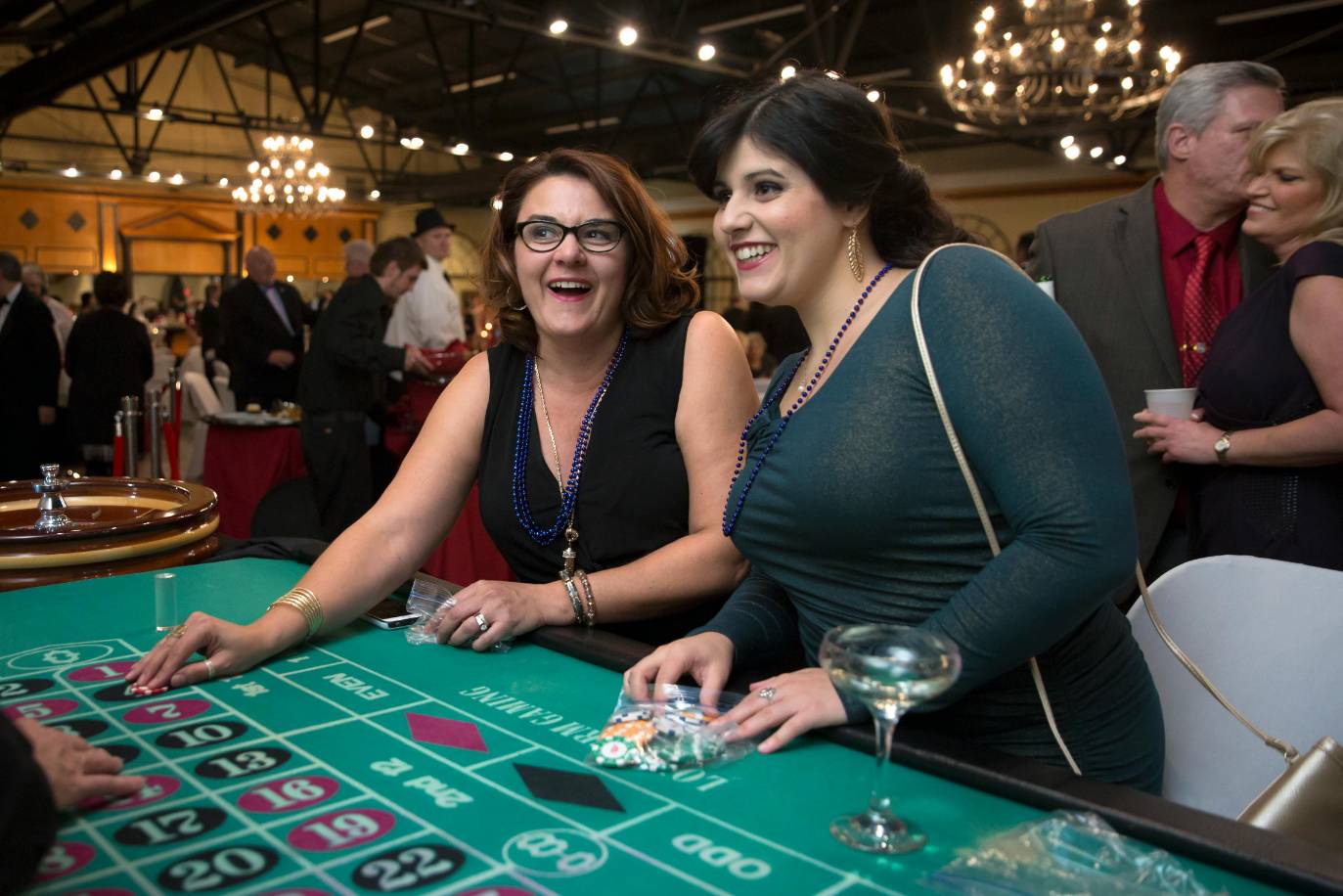
Roulette has long been one of the most iconic and beloved games in the casino world. In 2025, with the rapid rise of online gambling in the United States, it has found an even stronger foothold in the digital landscape. The combination of advanced technology, live dealer experiences, mobile-first platforms, and innovative variations of the game has made online roulette an integral part of the American gambling scene. More states are legalizing and regulating online casinos, which means players now have access to a wide range of secure, competitive, and entertaining platforms offering roulette in multiple forms. This article explores the very best U.S. online casinos offering roulette in 2025, highlighting what makes them stand out, how they cater to American players, and why roulette continues to thrive in the modern gaming industry.***The Significance of Roulette in Online CasinosBefore diving into the list of top casinos, it is important to understand why roulette holds such a central place in the online gaming ecosystem. Unlike games that require heavy strategy, like poker or blackjack, roulette appeals to both beginners and experienced gamblers because of its simplicity and universal excitement. The spin of the wheel, the bounce of the ball, and the moment of anticipation create a dramatic, cinematic experience unmatched by most other games. For American players, roulette also carries cultural significance—Las Vegas made it famous, Hollywood glamorized it, and now online casinos have brought it into homes and mobile devices across the nation. In 2025, the U.S. market has become one of the largest audiences for roulette, influencing design trends, betting features, and even promotional campaigns.***BetMGM Casino: A Leader in Online RouletteBetMGM continues to dominate the U.S. online casino industry in 2025, and roulette is one of the primary reasons why. The platform offers a wide range of roulette variations, from classic American Roulette with the double zero to European and French versions that attract more experienced players looking for better odds. Beyond the basics, BetMGM has also invested heavily in live dealer roulette tables, streamed in high-definition with multiple camera angles that replicate the feel of a Las Vegas casino floor. Players can chat with dealers and fellow gamblers in real time, adding a social element that traditional digital roulette cannot match. One of BetMGM’s standout features is its seamless integration with its sports betting and poker platforms, allowing players to easily switch between roulette and other forms of gambling. Bonuses for roulette players are also frequent, including cashback offers, matched deposits, and seasonal promotions tied to American holidays like Memorial Day and Thanksgiving. With licensing in multiple states and a strong reputation for fairness and security, BetMGM is often the first choice for U.S. roulette players.***DraftKings Casino: Innovation at Its CoreDraftKings started as a daily fantasy sports giant, then moved into sports betting, and has now become a powerhouse in the online casino sector. In 2025, DraftKings Casino is one of the most innovative platforms for roulette enthusiasts. What sets DraftKings apart is its ability to blend traditional gameplay with new-age features like interactive stats, betting history analysis, and even gamification elements such as leaderboards and challenges. The roulette lobby on DraftKings offers American, European, and French versions, along with themed tables that celebrate U.S. sports culture and pop culture events. For instance, during March Madness or the Super Bowl, DraftKings often launches limited-time roulette promotions that tie into the sports world, making the game more engaging for crossover players. The platform’s mobile app is considered one of the best in the industry, with lightning-fast load times and intuitive design that makes placing bets quick and easy. DraftKings also appeals to casual players by offering free-to-play demo versions of roulette, allowing newcomers to learn the game without financial risk. This mix of accessibility, creativity, and strong branding has positioned DraftKings Casino as a favorite among younger American gamblers in 2025.***Caesars Online Casino: Prestige Meets Digital ExcellenceCaesars has always been synonymous with American gambling culture, and its transition into the online world has been seamless. In 2025, Caesars Online Casino is one of the top destinations for roulette players who want a premium experience. The platform not only offers multiple variations of roulette but also integrates its iconic Caesars Rewards program, meaning players earn loyalty points online that can be redeemed for hotel stays, dining, and entertainment at Caesars’ physical properties across the country. This blending of digital and physical benefits is something few competitors can match. Caesars also excels in live dealer roulette, with professional dealers trained to replicate the elegance and sophistication of a Las Vegas casino. The graphics and interface are top-notch, with smooth gameplay and immersive sound effects that make every spin feel like a big event. Promotions are frequent and often tied to Caesars’ resort network, adding extra value for loyal players. For gamblers who want an online roulette experience backed by decades of prestige, Caesars remains an unbeatable option.***FanDuel Casino: Trusted and Growing RapidlyFanDuel, much like DraftKings, originally built its reputation in sports betting but has since expanded into the online casino space. By 2025, FanDuel Casino has grown into one of the most trusted and popular platforms for roulette in the U.S. The platform emphasizes variety, offering American Roulette, European Roulette, multi-wheel versions, and even innovative hybrid games that combine roulette with slot-style features. Its live dealer section is particularly impressive, featuring tables with different betting limits to cater to both casual players and high rollers. FanDuel’s reputation for fast, secure payouts makes it especially appealing to players who value reliability in their gambling platforms. The brand also invests heavily in responsible gambling tools, offering features like deposit limits, time trackers, and reality checks to help players maintain healthy gaming habits. This responsible approach has earned FanDuel a loyal customer base, and its roulette offerings continue to grow in popularity year after year.***BetRivers Casino: Player-Focused and ReliableBetRivers is another major player in the U.S. online casino market, especially in states like Pennsylvania, Michigan, and New Jersey where it was among the first to launch. What makes BetRivers stand out is its player-focused approach. The casino’s roulette section is diverse, with both digital and live dealer options that appeal to different types of gamblers. The platform also includes community chat features during live games, allowing players to interact with one another, creating a social atmosphere similar to what you’d find on a physical casino floor. BetRivers also prides itself on transparency, offering clear information about odds, payout rates, and house edges. Bonuses are structured in a way that benefits roulette players specifically, such as reload bonuses and cashback offers tied to roulette wagers. Customer service is another strong point, with fast response times and knowledgeable support agents available around the clock. For American players seeking a reliable and transparent roulette experience, BetRivers is consistently a top choice.***Emerging Casinos to Watch in 2025While the big names dominate the U.S. online roulette market, several emerging platforms are worth keeping an eye on in 2025. Smaller casinos like WynnBET and Bally’s Interactive are making strides by offering innovative roulette variations and highly competitive bonuses. These platforms often experiment with themed roulette tables, VR integration, and gamified elements that appeal to younger audiences. As more states open up to online gambling, these new entrants could become significant players in the roulette industry, pushing established brands to continue innovating.***The Future of Online Roulette in the U.S.Looking ahead, the future of online roulette in the United States seems brighter than ever. With rapid advancements in technology, players can expect even more immersive experiences, including virtual reality roulette rooms where they can walk around a digital casino and interact with other players. Artificial intelligence is also set to play a role, personalizing gameplay by suggesting bets based on player behavior and offering real-time insights. The legalization trend is another major factor—by 2025, more than half of U.S. states have either legalized or are in the process of legalizing online gambling, dramatically expanding access to roulette. With these changes, roulette will remain one of the most recognizable and enjoyable games for American gamblers, continuing to evolve while maintaining its timeless appeal.***ConclusionIn 2025, American players have more options than ever when it comes to spinning the roulette wheel online. Platforms like BetMGM, DraftKings, Caesars, FanDuel, and BetRivers lead the way, offering secure, immersive, and rewarding experiences that capture the essence of both Las Vegas and modern digital entertainment. With technology advancing and more states embracing online gambling, roulette is not just surviving—it is thriving. Whether you are a casual player placing a bet on red or black, or a high roller chasing big wins on single numbers, the best U.S. online casinos ensure that every spin is unforgettable. The wheel of roulette has been a symbol of chance and excitement for centuries, and in America’s digital age, it continues to spin stronger than ever.
By James Carter · 04 Oct 2025
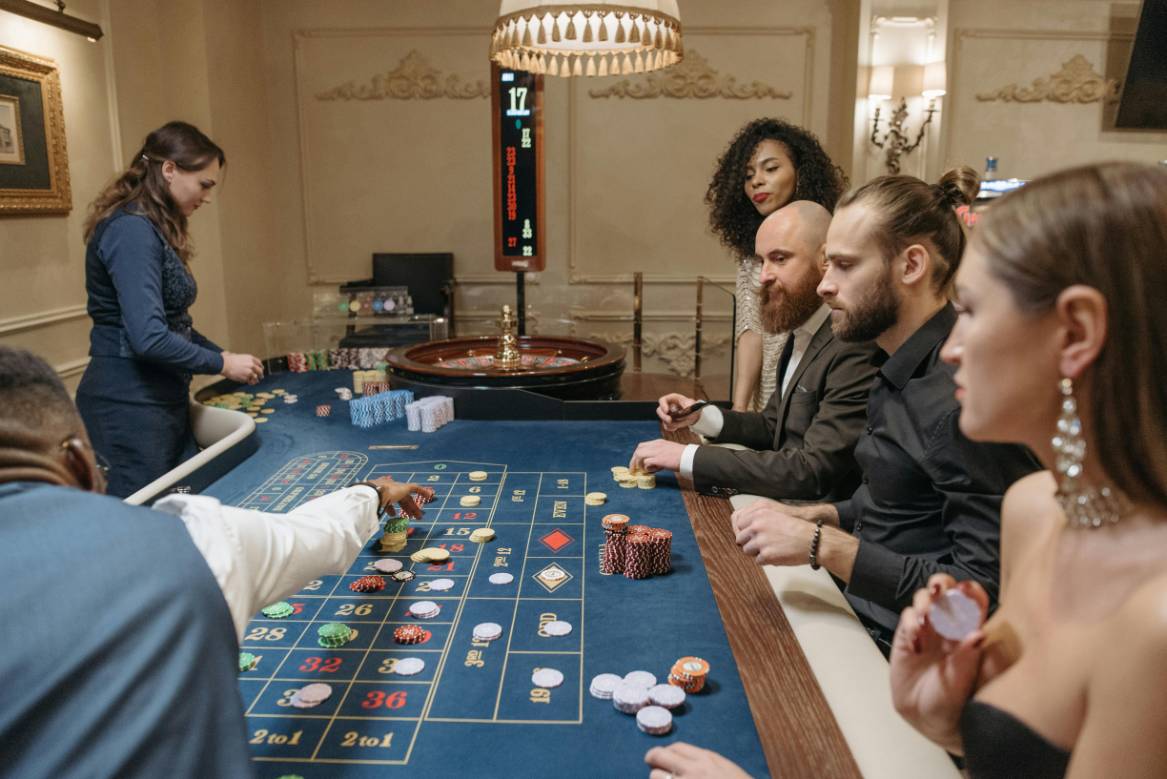
Online roulette has exploded in popularity across the United States, and American players are leaving their mark on how the game is played, marketed, and experienced. No longer just a European favorite, roulette has become a cultural phenomenon in the U.S. digital casino world. From betting styles to mobile-first preferences, the habits of American gamblers are shaping the modern roulette landscape in ways that are unique, innovative, and distinctly American.***The Rise of Mobile GamingOne of the biggest ways American players are influencing online roulette is through mobile usage. With smartphones now the dominant device for entertainment, U.S. players demand roulette platforms that are fast, user-friendly, and optimized for smaller screens. This trend has forced online casinos to design mobile-first roulette apps, ensuring smooth gameplay, secure payments, and live dealer integration. The convenience of spinning the wheel anywhere—whether on a commute, during a lunch break, or while relaxing at home—has made mobile roulette the top choice among American gamblers.***Betting Habits of U.S. PlayersAmerican players have distinct betting styles that set them apart from their European counterparts. Many prefer bold, high-risk wagers on single numbers, chasing the thrill of large payouts, while others lean towards steady outside bets like red/black or odd/even. This diversity in betting behavior has pushed online casinos to create features like customizable betting limits, streak-tracking tools, and bonus systems tailored to both casual players and high rollers in the U.S. market.***The Appeal of Live Dealer RouletteAnother trend reshaping the experience is the surge in demand for live dealer roulette. American players crave authenticity and interaction, making live-streamed roulette tables a massive hit. Watching a real dealer spin the wheel while interacting via chat creates a social and immersive environment, echoing the Las Vegas casino vibe. U.S. casinos have responded by investing heavily in high-definition streaming, multiple camera angles, and even themed tables that reflect American culture and holidays.***Influence of Pop Culture and StreamingPop culture in the United States has played a key role in how players view online roulette. From Hollywood films to Twitch streams, roulette is often portrayed as a glamorous and thrilling experience. Today, American streamers broadcast their online roulette sessions to thousands of followers, blending entertainment with gambling. This has helped normalize roulette as not just a game of chance but also a form of digital content creation and community-building.***Bonuses and Promotions for American PlayersTo attract U.S. players, online casinos now design bonuses and promotions that cater specifically to the American market. Offers such as no-deposit bonuses, cashback rewards, and loyalty points are heavily marketed. Some platforms even celebrate U.S. holidays like July 4th or Thanksgiving with themed roulette promotions, further blending American culture with the online gambling experience.***ConclusionAmerican players are reshaping online roulette in ways that extend far beyond gameplay. Their preference for mobile-first experiences, bold betting strategies, social interactivity, and cultural integration is transforming how the game is offered worldwide. What was once a European pastime has now been redefined into an Americanized experience that combines tradition with innovation. As online casinos continue to adapt to U.S. trends, one thing is clear—the future of roulette is being spun by American players.
By Samantha Lee · 03 Oct 2025

The legalization of online gambling in the United States has been a complex and evolving process, and roulette sits at the heart of this transformation. Once associated solely with glamorous casino floors in Las Vegas or Atlantic City, roulette has made its way into the digital world, where millions of Americans now access it through licensed online casinos. But is online roulette actually legal in the United States? The answer depends on where you live. Gambling laws are determined at the state level, creating a patchwork of regulations that range from fully legal and regulated to completely prohibited. This article explores the legal status of online roulette in the U.S., breaking it down state by state while highlighting the broader regulatory trends shaping the industry.***The Federal vs. State DynamicAt the federal level, online gambling has historically been restricted by laws such as the Unlawful Internet Gambling Enforcement Act (UIGEA) of 2006, which limited financial institutions from processing online gambling transactions. However, this law did not outright ban online gambling—it simply left enforcement to the states. The U.S. Supreme Court’s landmark 2018 decision to strike down the Professional and Amateur Sports Protection Act (PASPA) further empowered states to make their own choices about online gambling, paving the way for online roulette to grow in legal markets.***States Where Online Roulette is LegalCurrently, only a handful of states have legalized and regulated online casino gaming, including roulette. These states are the leaders of the digital gambling movement, offering safe, secure, and licensed platforms for players.***New JerseyNew Jersey has been the pioneer of online gambling in the United States since 2013. The state’s Division of Gaming Enforcement (DGE) oversees all online casino operations, and players can access a wide variety of roulette games, including both American and European versions. New Jersey’s robust legal framework has made it a model for other states considering online gambling legislation.***PennsylvaniaPennsylvania followed New Jersey’s example by legalizing online casinos in 2017. Since then, the Pennsylvania Gaming Control Board has licensed multiple operators, and roulette has become one of the most popular games in the state. The strong tax revenues generated from online roulette and other casino games have demonstrated the economic potential of legalization.***MichiganMichigan legalized online gambling in 2019 and officially launched its online casinos in 2021. Roulette quickly became a favorite among players, especially in its live dealer form. The Michigan Gaming Control Board regulates operators and enforces strict guidelines to ensure fairness and security.***DelawareDelaware was actually the first state to legalize online gambling back in 2012. The state’s small population means its market is limited, but online roulette is available through state-operated platforms. Delaware continues to collaborate with other states to expand its online gaming presence.***ConnecticutConnecticut joined the online gambling market in 2021, allowing licensed tribal casinos to operate digital platforms. Roulette is widely available to residents, and the state has quickly seen strong participation rates. This demonstrates how even smaller states can successfully integrate online roulette into their gaming economy.***West VirginiaWest Virginia legalized online casinos in 2019, and roulette has been a part of the state’s offerings since launch. With a regulatory framework similar to New Jersey and Pennsylvania, the state provides players with a safe and fair gaming environment.***States Considering LegalizationSeveral states are currently debating whether to legalize online casinos, including roulette. These include New York, Illinois, and Indiana. Each state recognizes the potential tax revenue and consumer demand but faces political challenges and debates over problem gambling. Should these states move forward, the availability of online roulette in the United States could grow significantly in the coming years.***States Where Online Roulette is Not LegalIn most of the country, online roulette remains either unregulated or outright prohibited. States like California, Texas, Florida, and Georgia do not currently allow online casinos. However, residents often find ways to access offshore platforms, which operate in a legal gray area. While these sites may offer roulette games, they do not provide the same protections as licensed U.S. operators, creating risks for players.***Tribal Casinos and Online RouletteIn several states, tribal casinos play a major role in gambling. Some tribal operators have begun exploring online roulette under compacts with state governments. This model is particularly important in states like Connecticut and Michigan, where tribal gaming entities are central to the industry’s growth.***Responsible Gambling RegulationsIn states where online roulette is legal, regulators emphasize responsible gambling measures. Licensed platforms are required to offer deposit limits, time restrictions, and self-exclusion options. These protections reflect the broader trend in the U.S. toward ensuring that the rise of online roulette does not come at the expense of public health.***Economic Impact of Legal Online RouletteThe legalization of online roulette has already proven economically beneficial for states that have embraced it. New Jersey and Pennsylvania, for example, generate hundreds of millions in annual tax revenue from online casinos. This revenue supports public services such as education and infrastructure, creating an incentive for more states to legalize online gambling. The jobs created in tech, customer service, and regulatory compliance add further economic benefits.***Future OutlookThe future of online roulette in the United States is promising. As more states witness the success of pioneers like New Jersey and Michigan, the momentum for legalization will continue to build. The growth of mobile technology, live dealer innovations, and even virtual reality roulette tables will further drive demand. Over time, it is likely that a majority of states will regulate online roulette, creating a safer and more accessible gaming environment for millions of Americans.***ConclusionSo, is online roulette legal in the United States? The answer is both yes and no. It is fully legal and regulated in a handful of states, while in most others it remains unavailable or exists in a gray area. However, the trend is clear: the future of online roulette in the U.S. points toward greater legalization, broader access, and continued innovation. For now, American players must navigate this patchwork system, but the wheel is spinning toward nationwide acceptance of this iconic game in the digital era.
By Rahul Sharma · 02 Oct 2025